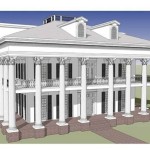Delving into the Architectural Blueprint of Sydney Opera House: Plan Dwg
Nestled on the iconic shores of Sydney Harbour, the Sydney Opera House stands as a testament to architectural brilliance and cultural significance. Its distinctive, shell-shaped design has captivated the world, and beneath this captivating exterior lies a meticulously planned interior, captured in the Sydney Opera House Plan Dwg.
The Plan Dwg is a detailed architectural drawing that provides a comprehensive roadmap of the Opera House's internal layout. It serves as a blueprint for architects, engineers, and contractors, guiding the construction and maintenance of this architectural marvel.
Unveiling the Plan Dwg's Essential Features
The Sydney Opera House Plan Dwg encompasses a vast array of information, including:
- Detailed Floor Plans: Each level of the Opera House, from the basement to the roof, is meticulously depicted, showcasing the placement of major performance spaces, rehearsal rooms, administrative offices, and public areas.
- Cross-Sections: These drawings provide valuable insights into the verticality of the Opera House, revealing the intricate interplay of levels and their spatial relationships.
- Elevations: The Plan Dwg includes elevations of the Opera House's exterior and interior, illustrating the building's architectural details, such as the iconic sails and the intricate ceiling structures.
- Services Plan: This plan outlines the distribution of essential services throughout the Opera House, including electrical systems, plumbing, air conditioning, and fire protection.
- Acoustics and Stage Design: Specialized plans focus on the acoustic properties and stage design of the performance spaces, ensuring optimal sound quality and stage functionality.
The Architectural Significance of the Plan Dwg
The Sydney Opera House Plan Dwg is not merely a technical document but a valuable architectural resource that reveals the genius of Jørn Utzon's design.
Design Evolution: By examining the Plan Dwg, architects can trace the evolution of Utzon's design, from early sketches to the final construction drawings. It provides insights into the iterative process that shaped the Opera House's iconic form.
Structural Innovations: The Plan Dwg showcases the innovative structural techniques employed in the Opera House's construction. The iconic shells are supported by a complex network of ribs and cladding, which are meticulously detailed in the drawings.
Functional Considerations: Beyond its aesthetic beauty, the Plan Dwg demonstrates the careful consideration given to the Opera House's functionality. It reveals the efficient flow of movement, the placement of amenities, and the optimal acoustics achieved within the performance spaces.
Preserving an Architectural Legacy
The Sydney Opera House Plan Dwg serves as a vital tool for the ongoing preservation and maintenance of this architectural masterpiece. By providing detailed documentation, it guides architects and engineers in ensuring the Opera House's structural integrity, acoustic quality, and aesthetic authenticity for generations to come.
As a testament to its architectural significance, the Sydney Opera House Plan Dwg has been recognized as a UNESCO World Heritage document, further solidifying its place in the annals of architectural history.
Conclusion
The Sydney Opera House Plan Dwg is a comprehensive and invaluable architectural resource that captures the essence of one of the world's most iconic buildings. It provides a deeper understanding of Utzon's design brilliance, the structural innovations employed, and the functional considerations that make the Opera House a global architectural marvel. As a UNESCO World Heritage document, the Plan Dwg plays a pivotal role in preserving this architectural masterpiece for posterity.

Sidney Opera House Dwg Drawings Teatro Dell Architettura Autocad

Sydney Opera House In Autocad Cad 473 25 Kb Bibliocad

Sydney Opera House Cad Design Free Blocks Drawings Details

Sydney Opera House Perspective Drawing Architecture Elevation

Sydney Opera House 3d Design Drawing Cadbull

Sydney Opera House Cad Design Free Blocks Drawings Details

Sydney Opera House 3d Model

Operates In Sydney Autocad Cad Free 481 81 Kb Bibliocad

Opera House Of Sydney Cadbull

Sydney Opera In Autocad Cad 514 29 Kb Bibliocad








